-
Posts
4,861 -
Joined
-
Last visited
-
Days Won
119
Content Type
Profiles
Forums
Events
Gallery
Blogs
Store
Community Map
Posts posted by Mayner
-
-
Studio Scale Models already produce a 4mm model of a Bandon Tank both roundtopped and Belpair firebox versions. https://www.studio-scale-models.com/B4.shtml
-
An important point to check with Roger is whether a 4mm loco chassis produced from 7mm artwork/photo tooling will be suitable for a OO gauge loco.
The width over chassis on a 4mm loco produced from re-sized 7mm/Gauge 0 artwork may be too wide for OO.
Alternatives would be: (a) to re-design the existing chassis so that its suitable for OO gauge (width over frames 12mm) or (b) the buyer purchasing proprietary etched or turned frame spacers and assembling the chassis as a conventional chassis.
Although my 4mm MGW vans were designed to be assembled to OO or 21mm gauge, it was necessary to re-design the chassis when I re-scaled the artwork to 2mm scale for a customer.
-
 2
2
-
-
I once thought of modelling the Irish Broad gauge to 8.57mm scale on Gauge 1 track to run on my Large Scale(1:20.5) scale garden railway (45mm gauge). Like Sam Carse moellers of the NZ 3'6" gauge tended to chose a proprietary track gauge and vary the scale to acheive the correct scale/gauge ratio. With few kits and an absence of any broad gauge Irish RTR Gauge 1 is essentially a scratchbuilders scale for the G1 modeller.
One of the main differences between modelling in larger scales like Gauge 1 and the smaller scales is that large scale modellers tend to bring locos/stock to run at club/group meetings and each others railways https://www.g1mra.com/joining-g1mra/local-groups/.
In the end I did not pursue the idea of modelling the Irish Broad gauge in 8.57mm as I already had more than enough 4mm modelling projects than I could manage and instead decided to focus on American 3' gauge using proprietary 1:20.3 scale in the garden. At the time I would probabably scratchbuilt or used etched brass/laser cut ply to produce locos and stocks, these days I'd probably use 3D printing for chassis, bodies and mechanisms similar to some 9mm Scale NZR modellers
-
 1
1
-
-
On 8/12/2025 at 11:07 AM, GSR 800 said:
I5 or so years ago i painted one side of my Worsley Works Laminate & Park Royal CIE late 50s green opposite side in Black & Tan and picked out the windows on a SSM Bredin in silver, I finished my Bredin set (1 Full Brake, 2 Comp) in late 50s green, though none of these (21mm gauge) coaches have ever operated on a layout, perhaaps some day?
-
 1
1
-
 1
1
-
-
Richard Chown's original Castlerackrent Irish outline 7mm broad gauge layout was apparrently based on a WLWR branch line running westwards from Tuam into Joyce Country, potentially Maam Bridge or even Leenaun on Killary Harbour
While the Alphagraphix J26 can be modified relatively easily to GSR or even MGW condition by modifying the smokebox and boiler fittings, the Alphagraphix G2 and J18 are based on the locos in late GSR/CIE condition with superheated belpair boilers and modified cabs, requiring major modification to model either class in MGW or early GSR condition.
-
 2
2
-
 1
1
-
-
Back to the workshop to keep Bachmann K27 464 on the road until it disintegrates. The locos was last in the shops in July for emergency repairs after the engine tender coupler failed when the loco pulled the dragbox out of the tender. The loco operated reasonably reliably until the end of the winter season despite the leading pony truck occasionally de-rail and the loco ceasing to chuff, though other sound functions continued to operate normally.
So finally time to bring the loco into the shops to carry out modifications to the leading truck and trouble shoot the sound system, before tidying up the workbench to resume working on small scale stuff!
The problem the Pony Truck. The original (plastic) pony truck dissintegrated several years ago and I fabricated a replacement (to the origonal design)from brass bar and plate though the leading wheels tended to run at an angle to the track due to the relatively short distance between the pivot and axle.
The leading end of the diecast frames/pilot (a weak point of the design)had fractured (metal fatigue) which I patched several years ago with brass strip and bolts.
The solution increase the distance between axle and pivot point. I increased the distance using a piece of brass plate I had in stock, bolted and soldered to the existing truck boring out the necessary holes with a pillar drill.
Next step was to drill & tap a 5mm dia hole (to take a n m6X1mm tap) in the frames close to the end point of a plastic guide/suspension beam intended to control latteral and vertical movement of the leading truck.
Time for the nitty gritty getting in with an M6 X1mm tap!
The modified pony truck. I originally intended to use a turned brass pivot bolt that would screw into the chassis, unfortunately the screw thread cut in the brass with my 6M-1mm die did not match the hole tapped in the chassis (possibly softness of the brass) but accepted an M6 x1mm bolt I had in stock!
I did not want the securing bolt to be continuously working loose in service, so I machined a brass spacing bush with a collar which both helps keep the pony truck pivot at the correct height and allows the truck to pivot from side to side. I retained part of the Bachmann suspension/guide beam which includes a sprung plunger which hopefully will help keep the pony truck wheels in contact with the track. Apart from some adjustment to increase vertical play the loco ran successfully without de-railing the leading truck on several test rund.
Why no Chuff-Chuff? 2000 era Large Scale Plug & Play DCC/RC decoders
 The exhaust chuff is controlled by a reed switched operated by a pair of magnets on one of the tender axles. Trouble shooting involved removing the tender body and checking through the rats nest of wires, thankfully one of the wires from the reed switch had come adrift from the large terminal block in the right centre of the photo.
The exhaust chuff is controlled by a reed switched operated by a pair of magnets on one of the tender axles. Trouble shooting involved removing the tender body and checking through the rats nest of wires, thankfully one of the wires from the reed switch had come adrift from the large terminal block in the right centre of the photo.
Bachmann introduced the K27 in 2007 with a Plug n Play interface for DCC decoders & RC power controllers not exactly compact or P&P but allowed me to convert the loco to battery RC without having to totally re-wire the loco! The large 8 pin terminal block is basically for controlling sound and lighting functions. The 6 pin + - 1-4 power control functions, small terminal on right next to power controller connections from radio receiver. Small board on tender floor in centre of loco sound controller with large speaker hidden beneath main power board and main batteries. Small board on left of tender power on/off to loco /charger switch.
Batteries are 7.2V 3000ma/h like the Drumm batteries of the 30s good for approx 4 years at this stage #464 is on her second set of batteries.
Tender body replaced! Radio receiver on board on far right loinked by 'servo leads" to power control board. Radio control system K27 and other Bachmann large scale locos originally produced by RCS systems (late Tony Walsingham) (Australia) during the late 2000s.
Significantly smaller combined radio receiver/power controllers have been released in recent years not dissimilar to DCC decoders, my Accuracraft K27 has a significantly smaller receiver/power controller and much more simple wiring!
Interestingly main complaint about the Bachmann K27 was cranks working loose when the loco was originally released, problem appears to have been resolved in the second batch released in 2008 my #464 appears to be from the 2008 batch and no problems with cranks, but almost everything else.! Though not bad when considering a 17 year old loco that appears to have been worked fairly hard before I picked her up.
Remaining repairs to #464 include reinforcing sections of cab which have become brittle/damaged and wiring repairs to loco headlight and classification lights which failed in recent weeks.
-
 6
6
-
-
13 hours ago, Westcorkrailway said:
Young people are well able for volunteering. Particularly if it’s accessible. On my own visit to the DCDR I was amazed by the amount of younger people on site.
myself and “the other 2” who ventured from Cork that day would probably be there every weekend if it was within arms reach. The simple fact is that it’s either 5 hours by road, 7 by rail, and a garunteed hotel stay!
Cork actually does have plenty of people volunteering, quite a significant number head to Maam cross, and a few also go to RPSI and the Cavan and Leitrim. All of these journeys though, are a cost and means your volunteer is already out of pocket just to turn up on site! Just goes to show the enthusiasm that is out there that people make that journey regardless
There is a long tradition of (often young) volunteers travelling great distances to work on railway restoration projects.
ITG members regularly crossed the Irish Sea from the Midlands and North (of England) to work at their base at Carrick on Suir and no doubt Inchacore and Downpatrick and help out on other Irish perservation projects.
Back in the day (30 off years ago) I regularly (fortnightly) made a 440 mile round journey by car from Watford to Portmadoc to Volunteer on the Welsh Highland Heritage Railway, at one stage I was living in Scotland and made a monthly 672 mile journey from Stirling to Port to carry out substructure work for the RED shed. As shuttering carpenter my job was to set up the shutters and holding down bolts for a pour by our concrete gang who made a 479 mile round trip by car from West London. Sometime I travelled by rail from Stirling to Warrington where I was picked up by a group of volunteers who regularly travelled by car from York to Port, other time I drove. We were mainly single guys with reasonably well paid jobs without family responsibilities, though a younger generation of volunteers teens and 20s had began to become involved, some of whom have become long term volunteers/company officers.
One significant differences between the Festiniog, Welsh Highland Heritage and other heritage railways in the UK, is that both the FR & WHHR provide overnight volunteer accommodation, the Festiniog Hostel and the WHHR caravan accomodation owned by volunteer groups.
Interestingly vintage carriage restoration/construction is mainly lead by a volunteers of a younger age group focused on the heritage aspect of the railway, while the older generation of volunteers/members were mainly focused on building a narrow gauge modern railway.
-
 2
2
-
-
10 hours ago, jhb171achill said:
Any idea when? I’d very much like to see that!
Only very late 60s/early 70s don't remember the specific year or edition.
The modelling was fairly basic in nature buildings scratchbuilt in plain card capturing the basic shape and curved roof profile of the buildings. As far as I recall there was no attempt to form or represent the profile of the corrugated iron, which at the time would have been challenging without specialist tooling/equipment.
-
 1
1
-
-
19 hours ago, Galteemore said:
The 3F, Jinty, Diesel shunter wheelbase was reasonably close to some of the ex-GSWR J4 & 9 and ex-DSER J8 Classess introduced post 1900 and the ex-DSER K2 2-6-0 locos. Main gap is a suitable donor chassis for the midland Cattle Engine with its large wheels and relatively short wheelbase for a large 0-6-0
Not sure of Hornby still produce a "Railroad" version of the Jinty or diesel shunter, or Bachmann their 3F or 4F though both Hornby & Bachmann 0-6-0s may be available second hand.
J4 262
J9 351 some members of J9 Class built with raised running board similar visually similar to J4 Class
J8 445
J8 444
A London based member of the "Malahide & Dromin Junction group used the Triang Hornby L1 as a donor chassis for an ex-GSWR D2/321 Class 4-4-0 and the 0-6-0 chassis for ex DSER J8 444.
Other locos included a GNR Compound and possibly a JT 2-4-2 produced by the late Harry Connaghton a Dublin based professional modelmaker who produced models of Irish Locos and stock in 4 & 7mm scale during the 1970s. The Malahide & Dronin Junction was exhibited at the Kilkenny Shop Dawson St during the late 70s before being exhibited for a period at Shannon Airport
-
 3
3
-
-
On 14/11/2025 at 9:13 AM, Killian Keane said:
Interestingly someone converted a Triang Jinty into a 'close enough" J11 during the early 1970s, there was a Railway Modeller series of articles on modelling corrugated iron buildings in card which featured assembling models based on Kenmare Goods and Carriage Sheds the 0-6-0 tank loco had a distinct GSWR cab, but no info on the loco. This was before the Modeller featured the OO Malahide & Dromin Junction layout as Railway of the Month in May? 72 and an article on Irish Broad Gauge modelling by Tim Cramer which featured several scratch built 21mm gauge locos incl a Bandon Tank, No90 a J26, a J15 Classis and Wills N Class Mogul modified to run of 21mm.
Probabably inspired me to attempt a Midland Std Goods (J19) plasticard body on Triang-Hornby 0-6-0 chassis, a DSER 2-4-2T in tinplate on a Nellie Chassis (damaged the chassis) & a SLNCR Large Tank (tinplate (soft drinks can) a re-wheeled Triang Princess chassis (driving wheels from Triang 0-6-0.
Not sure if a current rtr manufacturer supplies a 'basic" reliable loco suitable for kitbashing/donor chassis for an Irish loco, current generation of RTR locos tend to be expensive, highly detailed and fragile for the kind of kitbashing or use with bodyline kits practiced/available in the distant past.
-
 1
1
-
-
17 hours ago, GSR 800 said:
Very neat job Harry
I settled on Tamiya "AS-12 Bare-Metal Silver" aerosol for silver/unpainted aluminium CIE coaching stock after several unsuccessful attempts with different 'silver" aerosols.
I finish with a Tamiya semi-gloss aerosol to seal the model after applying the transfers.
-
 6
6
-
-
51 minutes ago, Mol_PMB said:
The Scammell shunter/tractor (cab, bonnet, fenders almost a primrose yellow) appears in a photos of 132 shunting at Oranmore in 1976 in "RailsThrough The West." The Scammell seems to have been stabled in the ex MGW goods shed when not in use shunting!
-
 1
1
-
-
7 hours ago, Colin_McLeod said:
Jonathan, I have very clear menories of my Father taking me to Lisburn station to see the new 'express diesel' hauling the Dublin train. On multiple occassions we saw a grey 121 class hauling the train. Sometimes bonnet leading but then more often cab leading.
It's these memories that prompted me to get the RPSI grey version in OO.
Remember hearing at IRRS Dublin annual Slide Show many years ago that:
(a) it was originally intended to include the new 121 Class in the same power Classification as the ex-GNR(I) MAK beccuse of their lower gross horse power and TE than the B101 Class Sulzers and use the locos on secondary main line services.
(b) the new locos were initially rostered on less demanding (slower) main line and branch line duties. One of the Links was a daily (down morning/up afternoon) Galway Mail Train working, with the 121 filling in on Galway-Tuam passenger trains.
(c) The Galway/Tuam crew apparrently operated the 121 'long hood" leading for a period turning the loco on the Galway & Tuam turntables. In the United States 'road switcher" locos were originally set up to run 'long hood" forward/leading including some classes introduced in the 1960s.
(d) The B121 seemed to prove themselves as a 'top link" main line passenger loco after successfully working CIE Enterprise services soon after their introduction.
A favourite of mine I mainly remember them in pairs working Connolly-Rosslare and Sligo passenger service and an afternoon Heuston-Westport services during the late 70s-early 80s
-
 5
5
-
 1
1
-
 2
2
-
-
A brass neck tends to go with the territory.
A claim through the Small Claims court https://www.courts.ie/hubs/small-claims or Consumer Protection Legislation https://www.citizensinformation.ie/en/consumer/consumer-laws/your-consumer-rights/#730206 may be quicker/more effective than an criminal prosecution by the Guards.
If push comes to shove in a successful Civil Case you can potentially send in the Sheriff or Debt Collector to recover whatever is owed plus their expenses. The evidential requirements for a prosecution are greater than in a civil case, the Guards must establish beyond reasonable doubt that the defendant has broken the law, DPP (Director of Public Prosecutions)won't take a case to court unless there is a reasonable chance of success and that its in the public interest.
Potentially looking at min 12 mths following complaint for case to reach court (if accepted by DPP), if successful potentially looking at a warning/ suspended prison sentence, small fine and possible reparations to the victim.
-
 2
2
-
 2
2
-
-
2 hours ago, Mike 84C said:
Mol, if you are interested in mills have a look at Sligo Heritage facebook pages. Wonderful photos of Ballysodare Mills, I love the flying cupboards !
The AEC,s would look good in CIE green.
There is a colour photo of Ballysodare mill in the 60s in Rails Through the West JHB & Barry Carse.
One early 60s AEC Mammoth (8 legger) grey (possibly) bulk grain body? amid a sea of IRM H & Bulk Grain wagons and what looks like a solitary Pal Van.
Whatever the gauge, scale or track standard modelling the Mill Yard would be a challenging project.
-
 1
1
-
 1
1
-
-
Typical 1950-era Irish trucks and loading!, most likely contractors hauling beet to the railhead possibly on contract to CSE or CIE.
One noticeable difference between Ireland and the UK practice was that up to the 1990s Irish operators usually loaded trucks to the up to the max they could physically carry as opposed to the the legal max, gross weight. Bodies of tipper & readymix concrete trucks tended to have a higher capacity than contemporary trucks operating in the UK. Timber dropside bodies remained popular on tipper trucks until the mid-late 60s, Irish metal tipper bodies (Thompson Eng) were quite different in design to UK practice and unlike available die cast models. This was brought home to me when I began working for a London based ground work contractor, in Ireland we typically carried + 20cu/m of material on a 3 axle truck our 4axle "Maggie Deutz" trucks (with lower profile body) were used to carry the same vol of material in London. GLW enforcement appeared to have tightend up by the timeI resumed working in Ireland in the mid-1990s, there was little difference in practice beeween Ireland and UK.
As a kid I was probably more interested in trucks than trains, my Dad once had a sand and gravel business which delivered sand to building sites in Dublin with his own trucks, but business was long gone before I appeared! Growing up in the 60s there were several hauliers/carters who parked their trucks on the streets/wasteland in our neighbourhood rather than in a yard, one haulier had a fleet of several Ford Thames Trader tippers (high sided woodend dropside bodies) that did contract work for the local Councils, I saw my first Hino an artic in use with a long distance haulier parked on the main road outside the drivers house around 1968.
-
 4
4
-
-
Large companies such as CIE, Roadstone tended to but AEC/Leyland trucks smaller operators and owner drivers tended to use 2 axle trucks Ford, Bedford, Dodge with Hino becoming a dominant marque during the late 60s. Growing up in the 60s some normal control models such as the Leyland Comet were still in use with engine/over forward control dominating, Models like the Bedford TK and tilt cab Ford, Dodge and BMC models appearing during the mid 60s. While CIE held a dominant position and larger companies had their own fleets, owner operators (hackers) running their own trucks (unbranded) were significant e.g. delivery from merchants to building sites & farms. CIE is likely to have used owner operators to deal with seasonal peaks such rail from farm to railhead during the beet campaign.
Owner operator trucks tended to be 'unmarked" without ownership or fleet details, trucks delivering to building sites in the 70s & 80s sometimes could be quite decrepit.
-
 1
1
-
 1
1
-
-
Comparison of Galway and Sligo line workings from the 1960 and 1980 WTTs indicate that the Sligo Night Mail was an out and back working from Sligo and the Sligo "Day Mail" in the 1960WTT was a through train to & from Dublin.
The Dublin-Galway 'night mail" were the only scheduled mail working on Mullingar-Athlone section in the 1980s timetable, the "day mail" that operated between Dunlaoire Pier and Galway had been withdrawn in connection with DART works.
Although the 'Day Mail" 1980 WTT. During the 1980s the consist of the early morning 08:00? Heuston-Galway and its mid afternoon 15:10? return included a TPO and a Luggage/Brake in its consist. During the 60s & 70s Day Mail connected with Sealink Mail Boat service to an from Holyhead running through to and from Dunlaoire Pier. The Day Mail was cancelled when the connection to the Pier was severed in connection with the DART during the late 70s and Galway Line passenger services reduced from 5 to 4 return trains daily.
The note (Ltd) in the train describition on the WTT indicates that the train operates as a mail train with limited passenger accommodation often 1 coach. I travelled a couple of times between Connolly and Galway on the 8:40 during Aug 77-78, mainly carrying passengers off the overnight Holyhead boat usually hauled by a 001, of conventional stock with buffet car possibly 7-8 coaches unfortunately don't remember if a TPO or vans were attached.
Night Mail may have included fitted wagons as tail traffic at least up to the 70s. I have a photo of an Up Night Mail arriving at Ballysadare in the early 60s consist made up of B149, 4w heating Van Black & Tan, ex-GSR side Corr coach Late 50s Green, Bogie TPO (possibly ex-GSR Green, approx 3-4 H vans.
David Malone supplied photos of 4w Bullied Vans in consist of Night Mail during late 60s-early 70s, 4w Post Office van marshalled next to loco ( window side of PO Van facing North/East luggage bags on hooks) followed by Hooded vans with 4w heating van marshalled at rear of train, may not have retained passenger accomodation?
The 1980 WTT indicates that the Night Mail may have lost its passenger accommodation, vaguely remember seeing 'a jackpot" with three trains crossing at Maynooth one evening during the early 80s. The down Sligo Liner was first to arrive and was propelled into the layby siding at the Leixlip end of the station, the Night Mail was next to arrive and routed into the passing loop, 141 Class, BR Van, TPO and a number of Luggage/Brakes. Up Sligo Pass arrived pair of 121 Class don't remember if coaches were Supertrain of conventional stock-----------its now a long long time ago!
A Westport portion of the Night Mail may have operated into the 80s, I remember seeing a photo of a 141 + 1 Luggage Van with An Post Renault 5 Van waiting at Roscommon. Presumably An Post Staff had enough time while between Connolly & Athlone to sort Mayo Road mail.
Down Trains
1960
1980
Galway Pas. M
Galway Sligo Westport Pas Mail (Ltd)
Dublin-Galway Mail M-F
Westland Row
8:40 am
8:10 pm
Connolly (Mail Centre)
21:45
Mullingar
9:55 am
10:03 am
9:30 pm
9:48 pm
22:57
23:07
Athlone
10:56 am
11:04 am
10:44 pm
10:56 pm
Galway
Pas M
Mullingar-Sligo Mail T:S
Westland Row
9:25 am
Mullingar
10:40 am
10:46 am
11:25 pm
00:35
Sligo
1:30 pm
2:20 am
2:30
1960
1980
Up Trains
Galway Pas. M
Galway Sligo Westport Pas Mail (Ltd)
Sligo-Mullingar Mail
Galway
3:30 pm
8:15 pm
22:00
Athlone
4:59 pm
5:12 pm
9:51 pm
10:05 pm
23:10
23:20
Mullingar
6:07 pm
6:19 pm
10:56 pm
11:15 pm
00:18
00:33
Connolly (Mail Centre)
01:45
Westland Row
7:40 pm
12:40 am
Sligo
2:25 pm
7:30 pm
19:45
Mullingar
5:13 pm
5:18 pm
10:55 pm
11:15 pm
22:25
Connolly
Westland Row
6:38 pm
12:40 am
-
 2
2
-
 1
1
-
-
I was responsible for concrete paving on housing and commercial projects down the years!
Concrete paving practice changed significantly down the years
(a) originally concrete paving/hardstanding was laid in bays up to 6-8' square 6'' mixed and placed by hand. Concrete bays on roads/footpaths and large areas tended to be cast in alternate bays to counteract shrinkage. Rebates (gen 1'X1") were formed at joints in road paving and filled with bitumen to prevent water seeping through to the sub-base and damaging the road.
(b) Bay width increased to a max of approx 12' from the 1920s onwards with longitudinal joints every 15-20', rebates again formed in joints in roads and filled with bitumen, typical Dublin Corporation road of the 20s-80s era. Roads had a tamped finish (improve traction/skid resistance), with a smooth (bullnosed) trowel finish at joint. In Ireland and the UK footpaths and paved areas where people were walking received a brush finish, joints barely noticeable in the smaller scales. The length of bay that could be physically be placed by a (4 man) gang in one day increased significantly 60'+ plus with the arrival of readymix concrete during the 1960s
During the 90s we received a particular "brushed finish" spec for the floors in the Masonite Plant to overcome issues with wood dust and the adhesives used.
(c) Significant change in practice occurred form the late 80s onwards with the widespread use of the power screed and the machine cutting of joints post placing.
What does this mean to the modeller? Square/retangular bays up to 8' in bays placed up to the 1920s. Max 12' wide bays with longitudinal joints every 15-20' (bitumen filled joints in roads) concrete placed 20s-80s, barely noticeable joints concrete placed late 80s onwards. Relatively smooth non-slip finish in paved areas where people were walking/working, tamped finish on roadways.
The main advantage over concrete over tarmac or stone/gravel paving is its duarbility & restistance to oils/chemicals and can be power washed
Photos from Inchacore revealed some interesting points.
2'X2' paving slabs used on running shed apron during 80s/90s.
Concrete paving with non-slip (oil/chemical resistant) floor paint finish inside Diesel No1 Mid 90s
Deisel No2 /Ramps area tidied up with (fine) stone fill to rail level for Inchacore 150. Interestingly paving slabs apparrently in use of walking routes through Ramps area.
Before the clean up! late 70s ballast/fines in in Ramps area filled rail level to allow access for maintence and repair work.
Whenever visited the 'surface" in the Ramps area was very slippy with oil grease and water!
It basically looks like anything goes in a loco yard from a concrete slab, to paving slabs or ballast brought up to rail level
I seem to use 3-4mm mdf coated with fine dark grey scatter on the paved areas (roads and loading banks) of my 1950 ish rural Irish layout.
-
 1
1
-
 2
2
-
-
4 hours ago, jhb171achill said:
This could vary.... However, 656 and 660 appear to have been working out of Mullingar in the mid 1940s and probably later too. The late Jack O'Neill wrote about firing on a turf train double headed by these two. 666 ("The Beast") spent a period in the 1950s on the DSER. Prior to 1950, they were almost never to be seen off the ex-MGWR lines.
I have a 1952 photo of 666 "Himself" arring at Sligo with a train of 7 6w coaches and a 1957 Shuttleworth photo of 659 (belpair firebox) making up the Night Mail at Sligo complete with 6W Midland TPO. Apparrently the 650 Class appear to have worked the Sligo portion of the Night Mail in the 1950 until replaced by the A Class. Some proper MGW 6w coaches incl a TPO is still on my to-do list if I ever get round to it!
-
 2
2
-
-
Hi Harry
Nice to see progress building your 1950s passenger train & 650 Class. how did you form the Laminate roof it looks the part?
-
 1
1
-
-
On 18/11/2025 at 8:24 PM, Mol_PMB said:
I'm still working on sourcing wheels - I've found some driving wheels but the leading wheelset (and perhaps the tender wheelsets) may need to be secondhand off ebay. And then I need longer square-ended axles; I have some ideas how to do this but need to make a jig first.
Ultrascale wheels are probably the best option if you are able to accept the long lead time (my last order fulfilled within 6mths), supplied to order complete with axle set for 21mm gauge, a decent crankpin system and no risk of tyres coming adrift from the wheel centre unlike AGW driving wheels, Sharman wheels next best alternative if you can source a set (possibly Brassmasters).
Most of my older 25+year old 21mm gauge steam outline locos fitted with Sharman wheels, Gibson on more recent locos, I ran into a problem with driving wheels coming adrift from the centres during assembly and AGW steel crankpins ringing off. I now remove the tyres from the centre, de-grease,then re-assemble securing with Loctite, I use 14BA c/s bolt as crankpin, AGW crankpin bush and secure with brass 14BA nut, worked without a problem for 25 years!
Most of my 21mm gauge diesels run on Ultrascale wheel sets with b-b set at 19.3. 19.3 B-B works with AGW OO/EM profile wheels, but 19.5 b-b with Sharman type B wheels which have a narrower tyre width than AGW or Ulrascale OO/EM profile wheels.
I seem to have managed without a wheel quartering jig before buying a GW quartering jig about 20 or so years ago https://www.gw-models.com/product/wheel-press-quartering-jig/ been worthwhile having assembled several locos with press-fit wheels and hopefullyseveral more.
-
 3
3
-
-
Getting complicated

GSR/CIE loco grey.
Its likely Inchacore formulated its 'loco' grey to its own recipe in house during the 1920s as RAL (German) & BS (British) colour codes only began to emerge during the 1920s.
Although I recently (about 5 years ago!) had the grey custom mixed from samples provided by JHB, I personally believe Howes Railmatch 412 "Weathered Black" provides a more realistic effect on a model. I several of my locos assembled about 30 years ago (how time flys) are painted in "weathered black" applied by airbrush, those finished in a satin varnish appear 'almost black" well cared for locos/spruced up for railtours, those finished in matt black varnish as grey careworn locos almost on their last legs.
650 Class.
The kit was eventually produced in three versions to covering (a) late MGW-GSR-CIE with round topped boiler (b) GSR-CIE with Inchacore cab slotted valences with round topped boiler (c) GSR-CIE with Belpair Boiler.
Although the initail version could be assembled in MGW-GSR or CIE condition, I introduced version (b) to similify assembly for modelers wanting to assemble the loco in late GSR-CIE condition by eliminating the tedious job of cutting out the half etched slots in the valences.
Interestingly both versions sold reassonably well and in equal numbers! I produced the X Belpair boiler version of the class in response to a customer comission, interestingly the Belpair boiler locos did not sell as well as the round topped versions.
While I completed a OO gauge MGW model of the loco for my self, 5 years on I still have to complete the assembly of a pair of 21mm gauge versions for myself both in GSR/CIE condition one Belpair one Roundtop firebox.
I guess one question is whether you will be tempted to follow De Selby's (Alan Edgar) example and assemble your loco with working inside valve gear.

https://www.rmweb.co.uk/topic/175977-jm-design-650-class/#comment-5018653
-
 2
2
-
-
Definitely worth considering building the West Cork 4-4-0T with a functioning chassis.
Several years ago Richard Ellis produced a Shapeways GNR(i) 2-4-2T with a 3 D printed chassis and pony trucks, I dont know if Markits have resumed production but Scalelink https://www.scalelink.co.uk/acatalog/Locomotive_Driving_Wheels_.html appear to produce a range of driving wheels which may be suitable and straightforward to use. Coupling rods could be fabricate using Alan Gibson "universal" coupling rod set or even laser cut in nickle silver or even steel, PPD in Scotland offer custom etching and laser cutting services https://ppdltd.com/laser-service.html.
Axle and bearing holes best reamed out and fitted with top hat brushes 1/8" driving axle, 2mm bogie carrying wheels, High Level and Branchlines (Advertises in UK modelling magaxines) supply suitable motors and gearboxes. Parrallel reamers (1/8" and 2mm) for opening up brushes/bearing holes for axles and set of Tapered Broaches for opening up holes in 3d printed chassis, and etched gearbox parts for bearings and holes in coupling rods. In full size practice castings/bearings/motion parts require machining to function.
It might be worth considering printing the loco using a Far Eastern 3D Printing Service such as https://facfox.com/service/sla-dlp-3d-printing-service/ (my preferred supplier) rather than a desktop or home printer. The majority of my wagons were printed in a SLA resin with ABS properties to overcome the problem with brittleness inherent with the majority of SLA resins compitable with desktop printers overcoming problems with printing fine detail parts like brake gear and buffer heads.
Facfox also has the capability to print parts in aluminium, a NZR 9mm scale modeller (NZR 3'6' gauge on O gauge track) had loco mechanisms (gearboxes, gears, chassis) printed in aluminium for diesel locos.
Lower production/ printing ting costs largely off set the cost of shipping an item (by courier) from China. The shipping of a small order such as the parts for a loco or several wagons about €25.
Customer service excellent (support staff understand my English!) we had some initial problems with parts damaged in transit, only recommendation would be to ask for individual parts to be wrapped individually in bubblewrap.
-
 1
1
-
 3
3
-
.png.c363cdf5c3fb7955cd92a55eb6dbbae0.png)

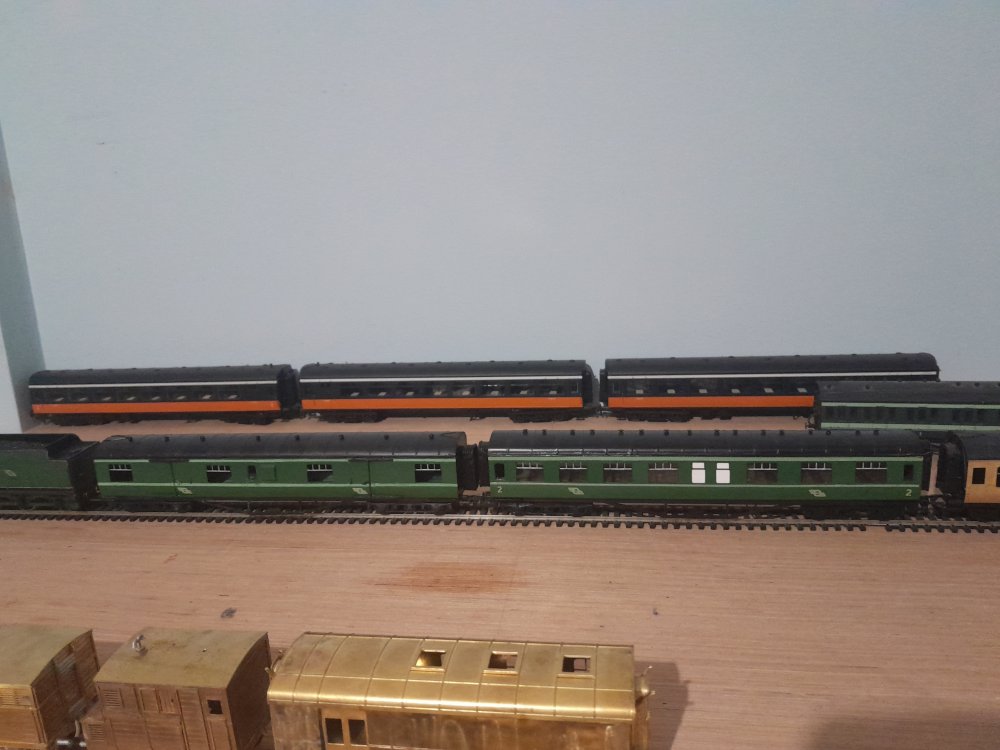

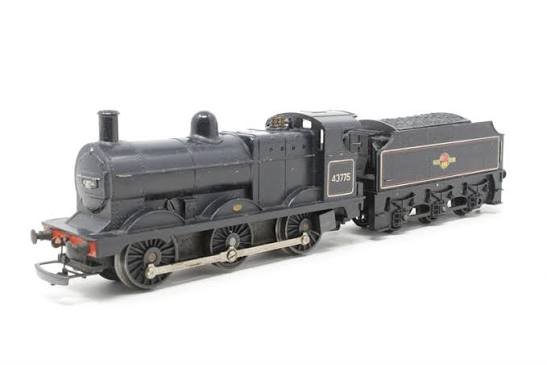
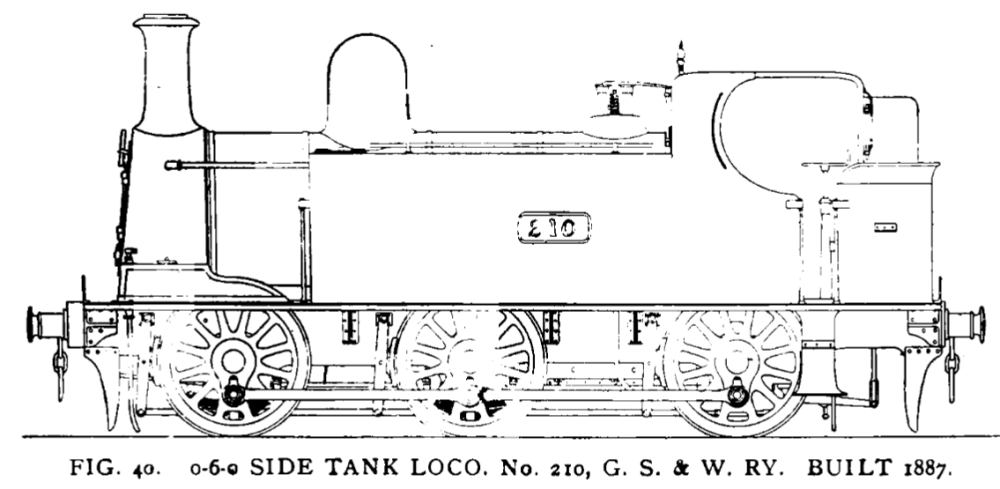
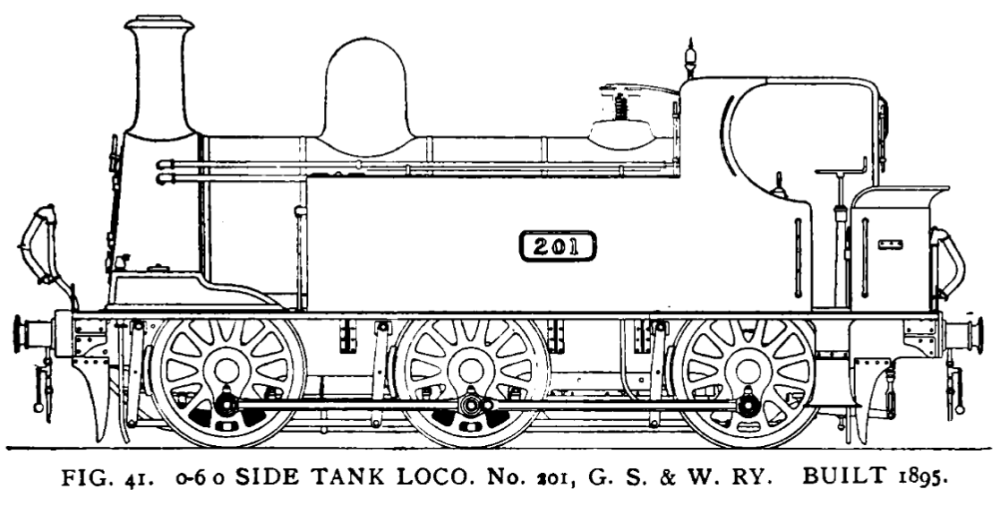
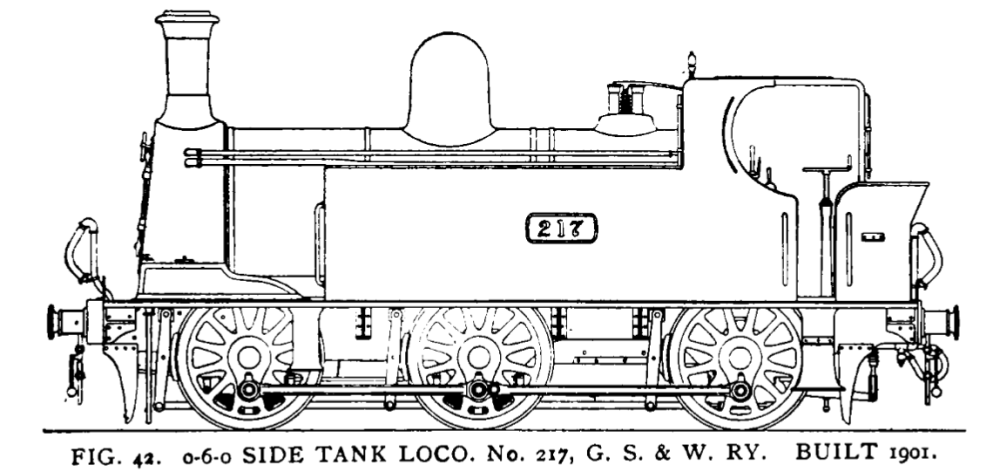
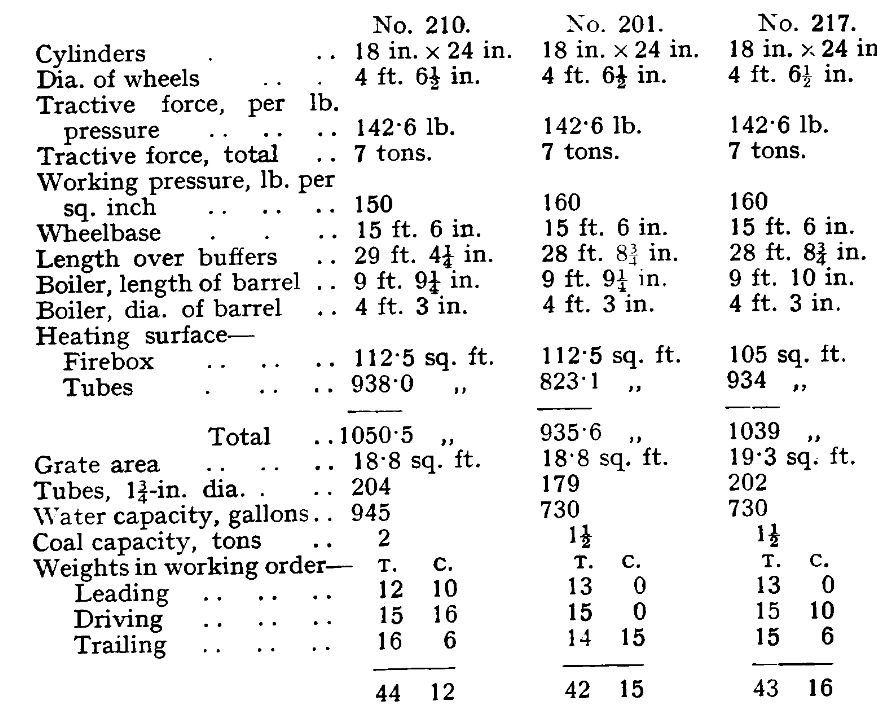

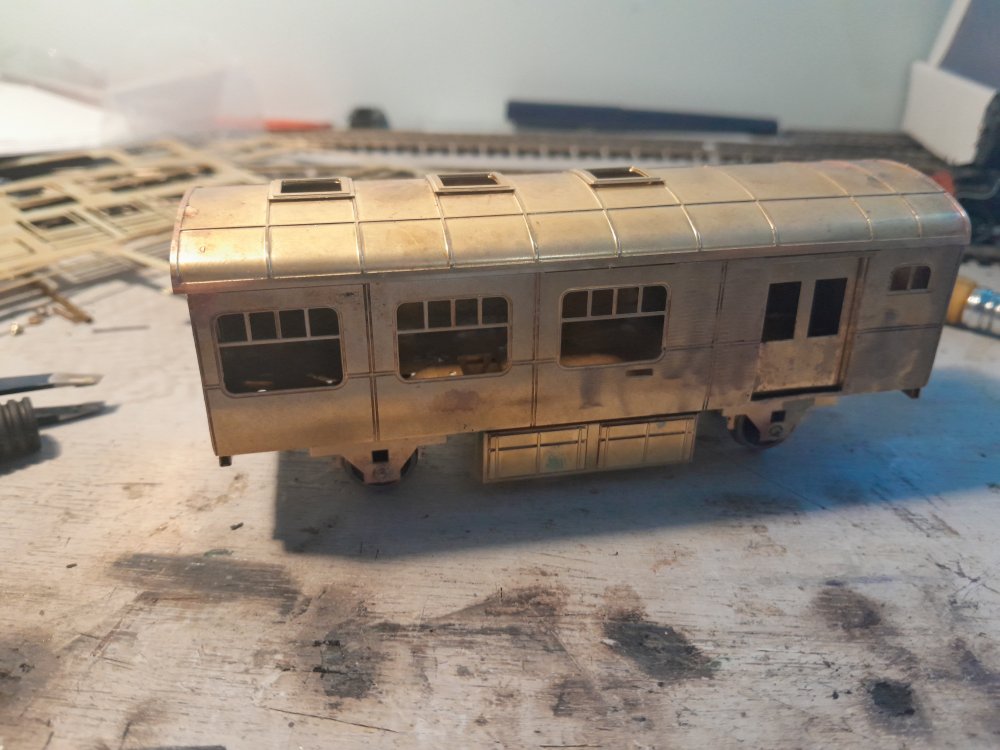
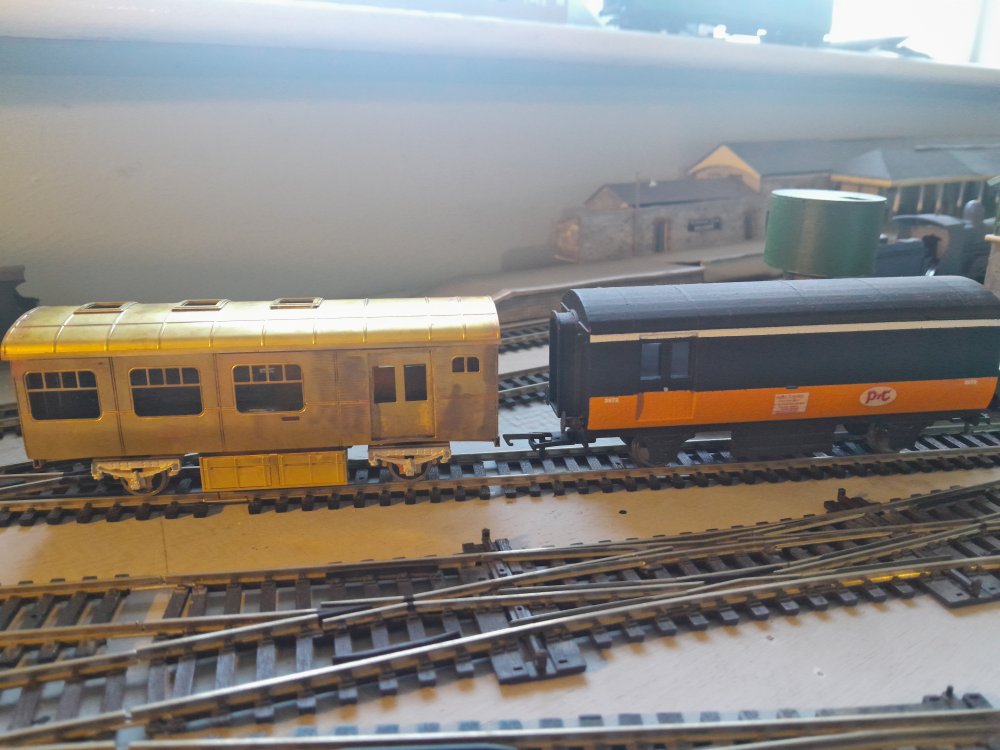
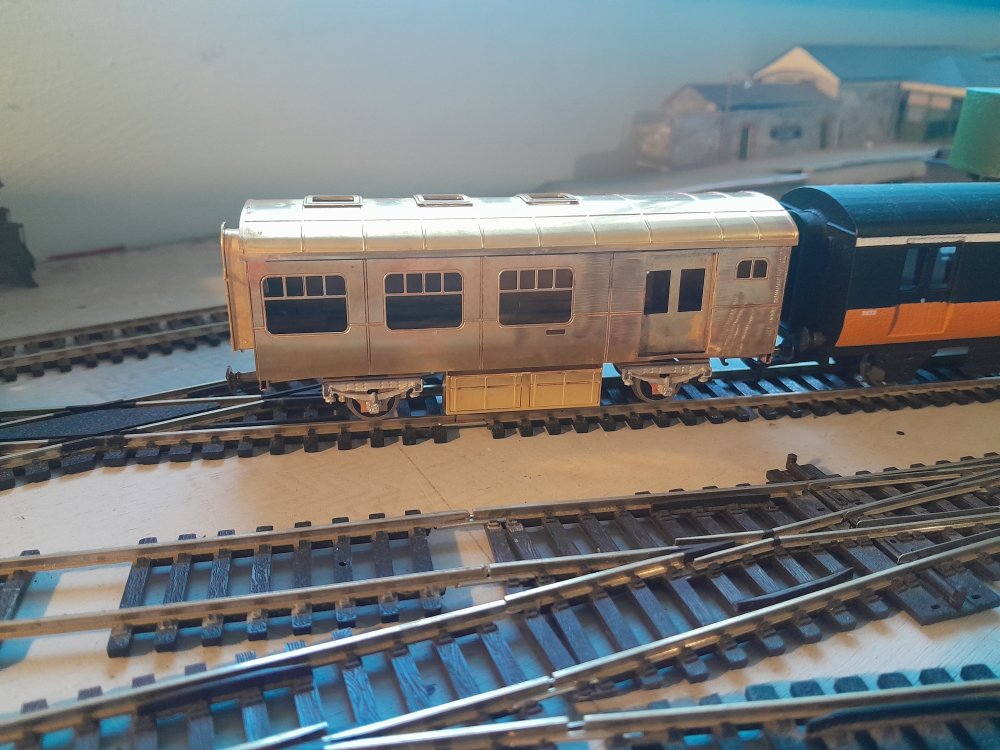
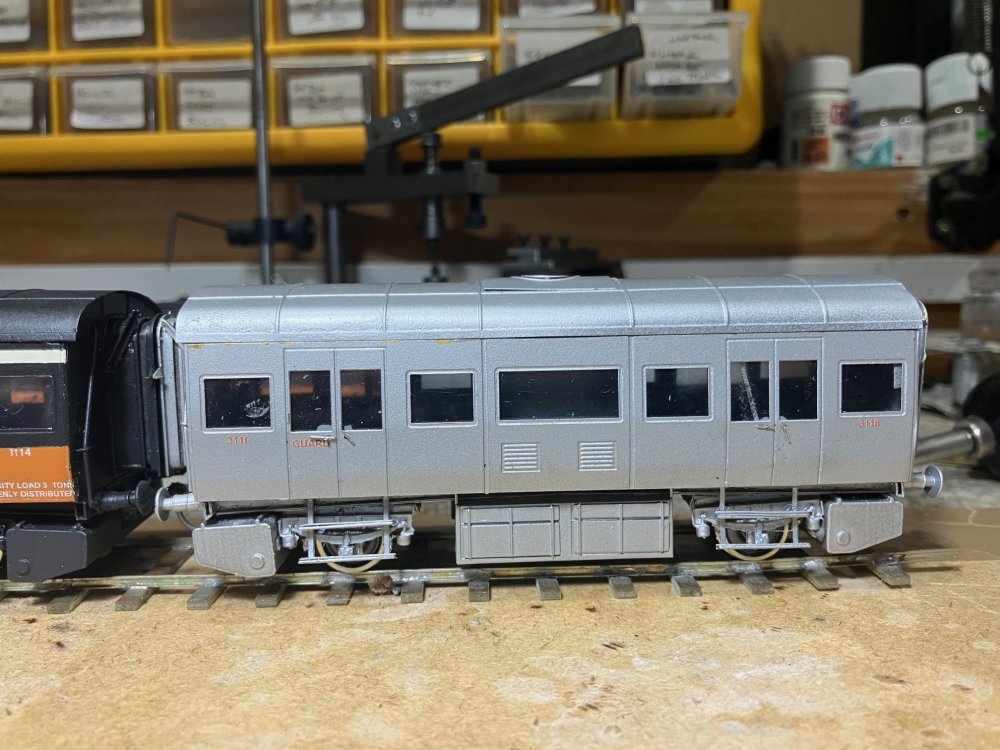
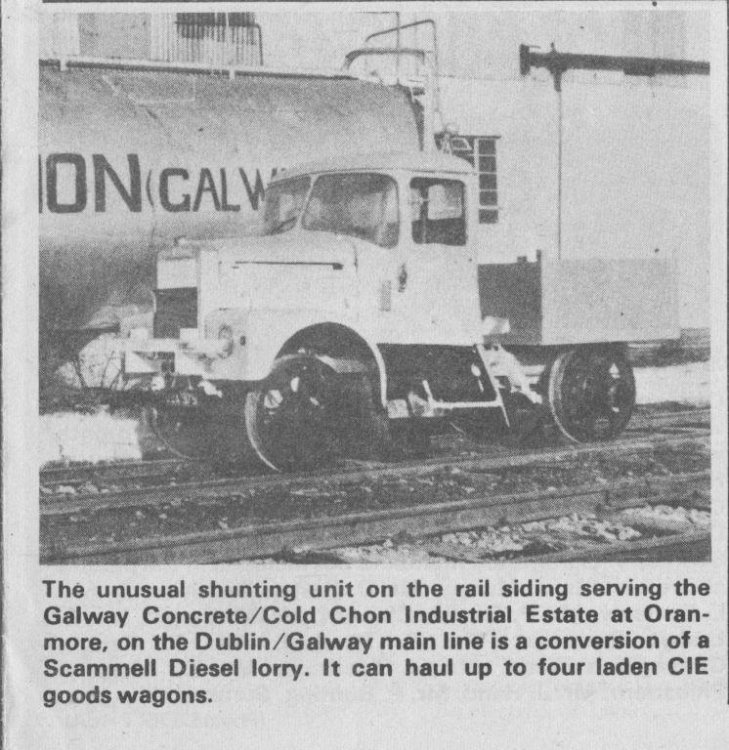
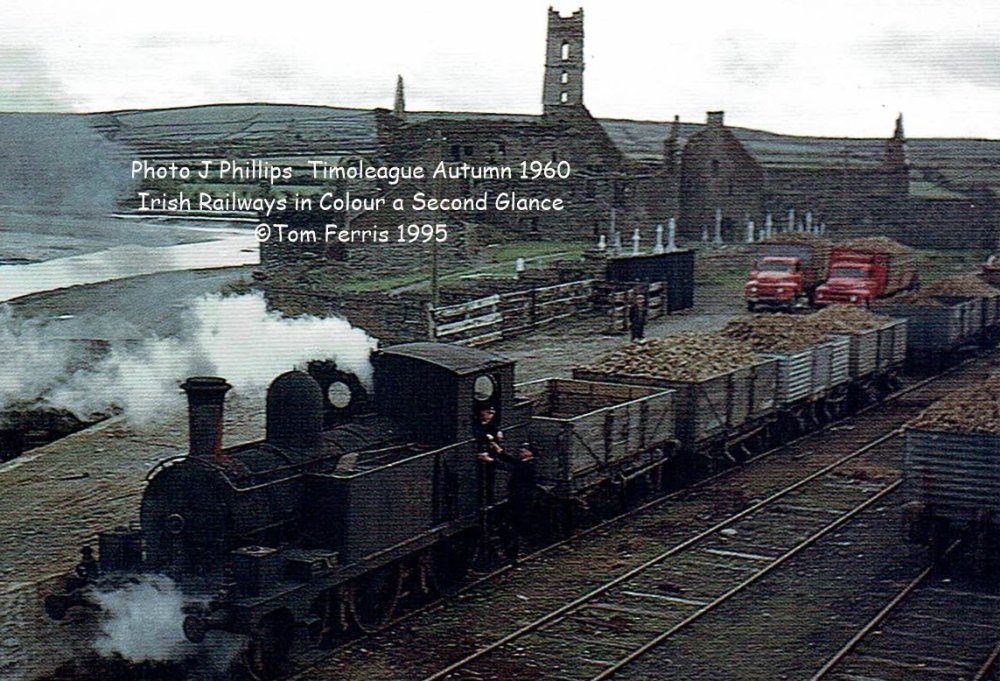
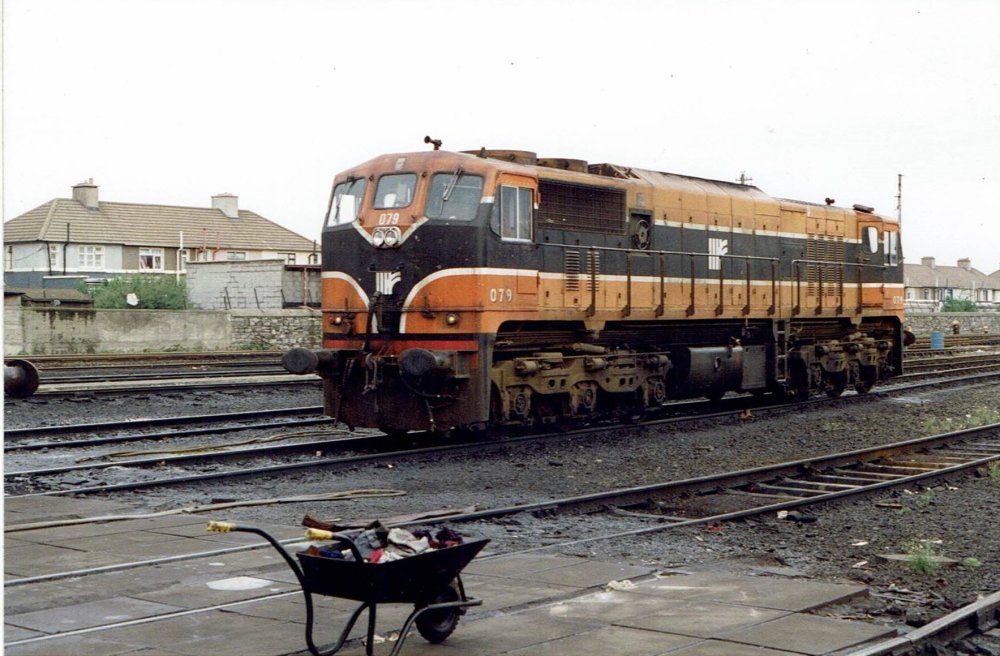

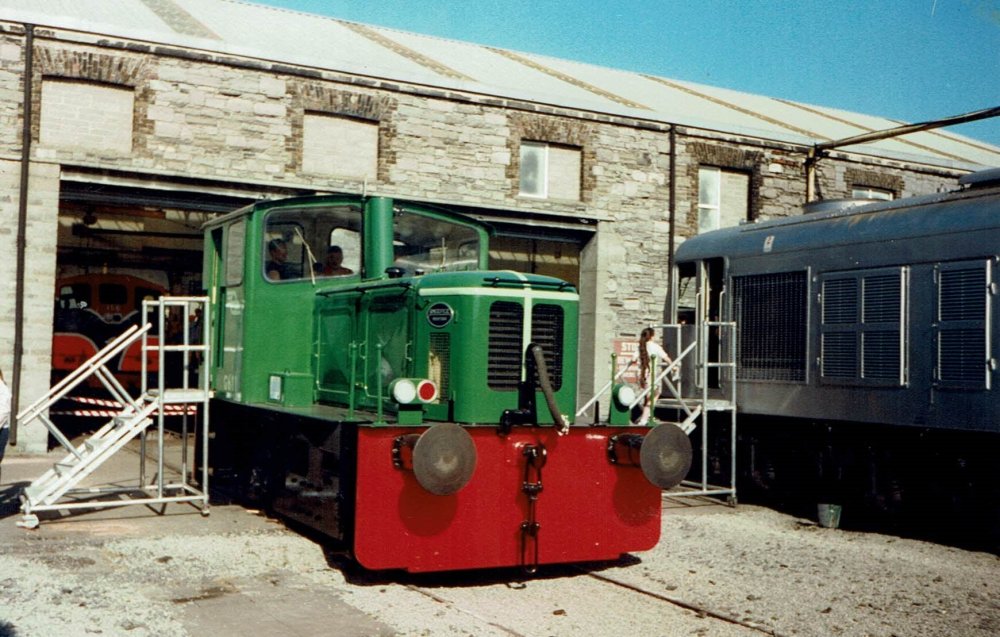
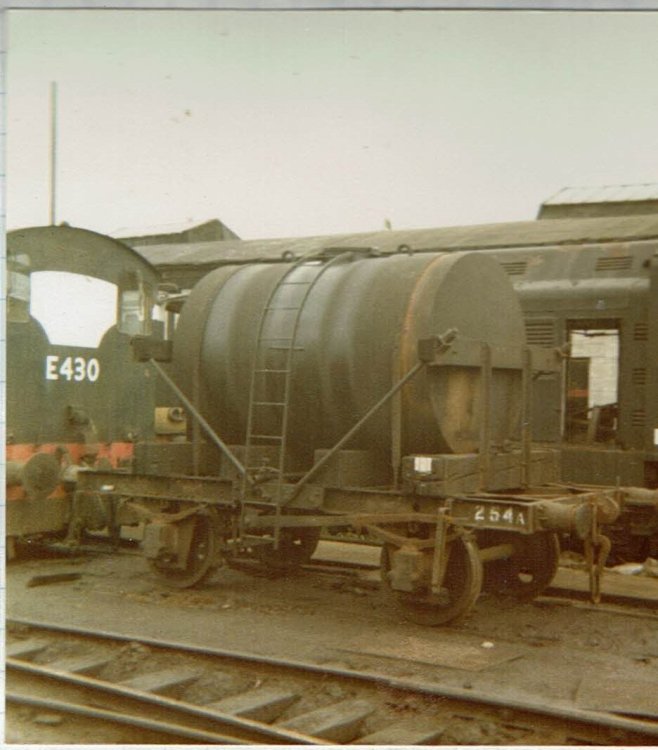
Gauge of interest: Alphagraphix 4mm Irish kits
in Irish Models
Posted
Nickle silver basically a superior material to work, basically stronger, easier to solder and easier to paint compared to brass.
Best contact Des on availability, Studio Scale models traditionally held kits in stock though may have shifted to supplying kits to order.
Des supplied tender etchs and castings at relatively short notice for a GSWR 52 Class 4-4-0 I produced several years ago.